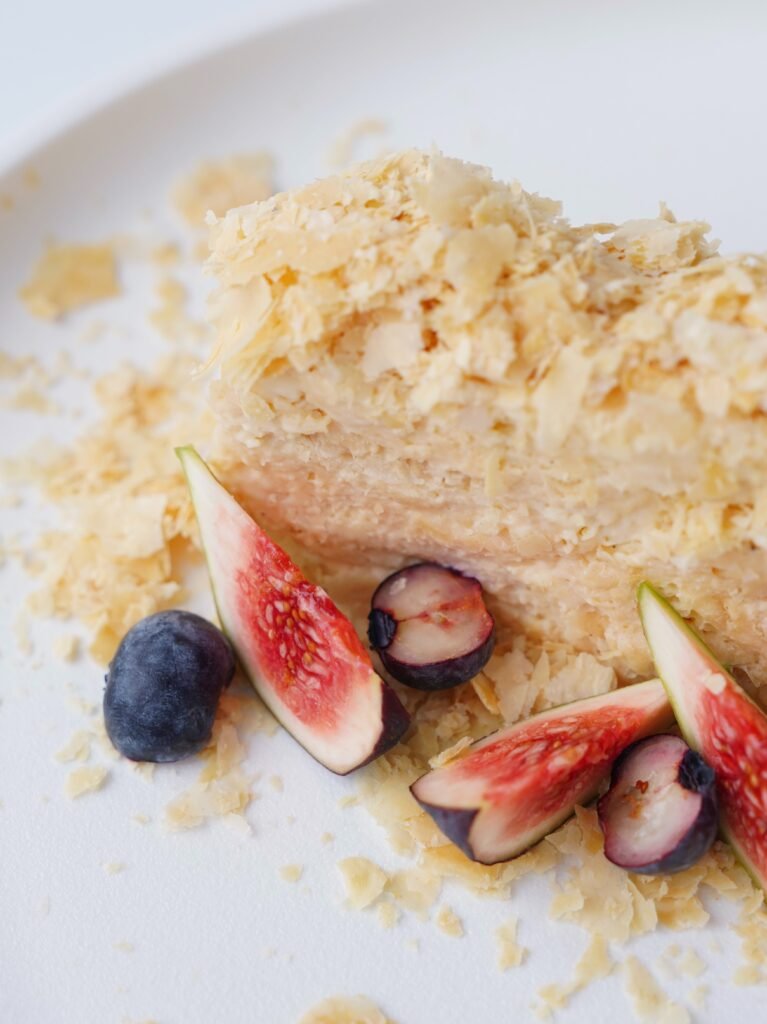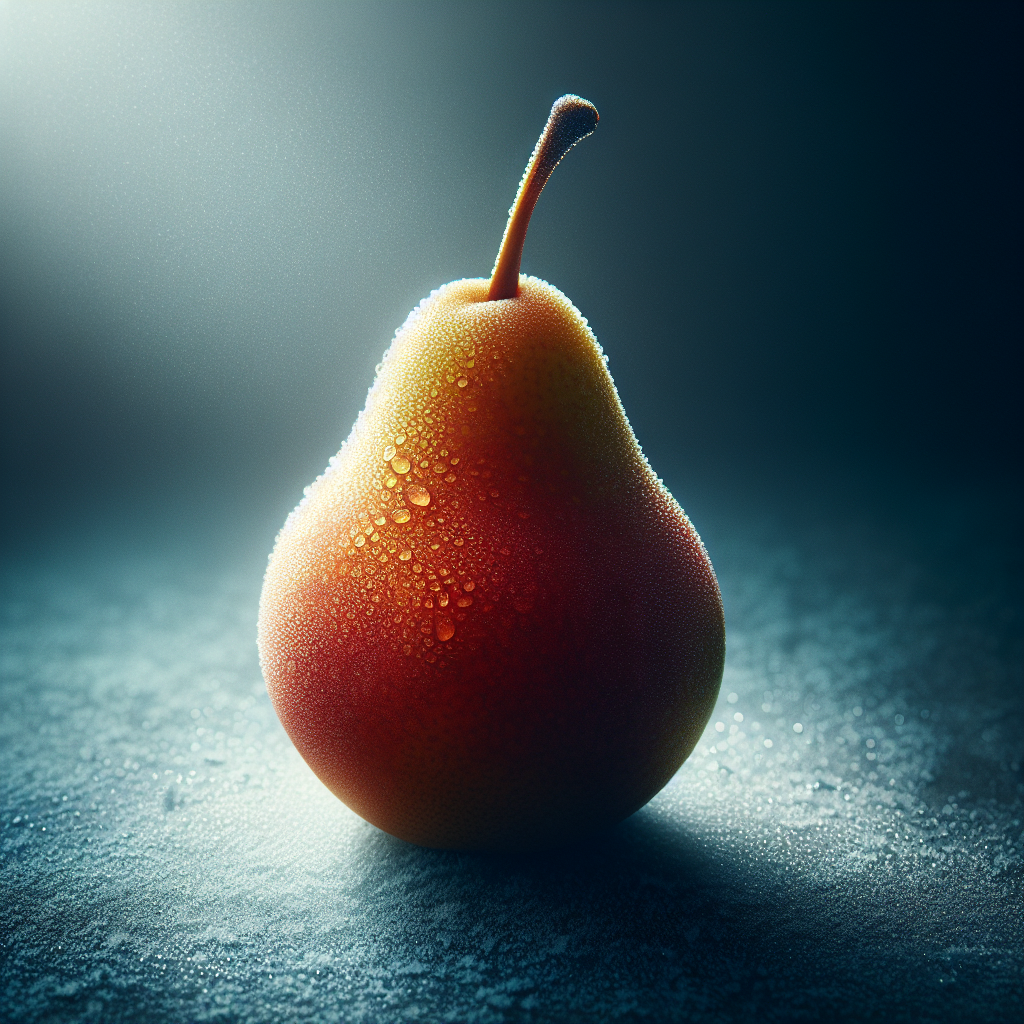As the seasons change and the air turns crisp, it’s time to embrace the abundance of delicious fruits that fall and winter have to offer. From juicy citrus to hearty apples, these fruits not only pack a punch of flavor but also provide a plethora of health benefits. Whether you’re looking for a snack to satisfy your cravings or a burst of vitamins to boost your immune system, this article will guide you through the best fruits to enjoy during the colder months. So grab a cozy blanket and get ready to discover the delightful world of fall and winter fruits.

Apples
Varieties of Apples
When it comes to apples, there is an incredible variety to choose from. You can find a wide range of colors, sizes, and flavors, ensuring that there is an apple perfect for everyone’s taste. Some popular apple varieties include Fuji, Gala, Granny Smith, Honeycrisp, and Red Delicious. Each variety has its own unique characteristics, ranging from sweet and crisp to tart and tangy. Whether you prefer apples for snacking, baking, or making a refreshing apple juice, there is a variety of apple that will suit your needs.
Nutritional Benefits
Apples are not only delicious but also packed with essential nutrients. They are an excellent source of dietary fiber, which aids in digestion and promotes a healthy digestive system. Additionally, apples are rich in antioxidants, including flavonoids and polyphenols, which help protect your body against cell damage caused by free radicals. They are also a great source of vitamin C, which boosts your immune system, and potassium, which supports heart health. Eating apples regularly can contribute to overall well-being and help maintain a balanced diet.
Recipes with Apples
Apples are incredibly versatile and can be used in various culinary creations. Whether you are in the mood for a sweet dessert or a savory dish, apples can be a delightful addition. For a classic dessert, try making apple pie or apple crisp. The warm and fragrant flavors of cinnamon and nutmeg combined with tender apple slices create a comforting treat. If you’re looking for a healthier option, consider baking apple chips or making homemade applesauce. For a savory twist, incorporate apples into a salad with mixed greens, nuts, and a tangy vinaigrette. The possibilities are endless when it comes to incorporating apples into your favorite recipes.
Pears
Types of Pears
Pears are another fruit that shines during the fall and winter months. They come in a variety of types, each offering a unique taste and texture. Some popular pear varieties include Bartlett, Anjou, Bosc, and Asian pears. Bartlett pears are known for their juicy and sweet flavor, while Anjou pears are slightly sweeter and have a smoother texture. Bosc pears have a more firm and dense flesh, making them ideal for baking, and Asian pears have a crunchy and refreshing taste, similar to apples. Whether you enjoy pears raw or cooked, there is a pear variety to suit your preferences.
Health Benefits
Pears are not only delicious but also provide numerous health benefits. They are a great source of dietary fiber, which aids in digestion and promotes a healthy gut. Pears also contain important vitamins and minerals, including vitamin C, vitamin K, and potassium. Vitamin C supports your immune system, keeping you healthy during the winter months, while vitamin K is essential for blood clotting. Potassium helps regulate blood pressure and supports heart health. By adding pears to your diet, you can enjoy their unique flavor while reaping the nutritional rewards.
How to Enjoy Pears
Pears can be enjoyed in a variety of ways, depending on your personal taste preferences. If you prefer the natural sweetness and juiciness of pears, enjoy them fresh as a snack or slice them up and add them to a salad for a burst of flavor. For a warm and comforting dessert, try poaching pears in a spiced syrup or baking them with a crumble topping. Pears also pair well with cheeses, such as blue cheese or Brie, making for a delightful appetizer or cheese plate addition. No matter how you choose to enjoy pears, their sweet and delicate flavor will elevate any dish.

Citrus Fruits
Oranges
Oranges are a quintessential winter fruit, known for their vibrant color and refreshing taste. They are available in various varieties, including navel oranges, Valencia oranges, and blood oranges. Navel oranges are easy to peel and have a sweet and tangy flavor, while Valencia oranges are juicier and make excellent fresh orange juice. Blood oranges, on the other hand, have a unique crimson flesh and a slightly sweeter taste. Oranges are not only delicious but also packed with essential nutrients, making them a perfect choice for the colder months.
Grapefruits
Grapefruits are another citrus fruit that thrives during the fall and winter seasons. They are known for their tangy and slightly bitter taste, which can be balanced out with a touch of sweetness. The most common types of grapefruits include pink grapefruits and white grapefruits. Pink grapefruits have a vibrant pink flesh and a sweeter taste, while white grapefruits have a more mellow flavor. Both varieties are rich in vitamin C and other antioxidants, providing numerous health benefits.
Tangerines
Tangerines are small, easy-to-peel citrus fruits that are perfect for snacking. They have a sweet and tangy taste, similar to oranges but with a slightly stronger flavor. Tangerines are a great source of vitamin C and provide a refreshing burst of juiciness. Their smaller size makes them convenient for packing in lunch boxes or enjoying on the go. Include tangerines in your winter fruit selection for a burst of citrus flavor whenever you need a pick-me-up.
Lemons
Lemons may be sour, but their bright and zesty flavor adds a refreshing touch to a variety of dishes. They are a great source of vitamin C and can help enhance the flavors of both sweet and savory recipes. Squeeze fresh lemon juice over roasted vegetables to add a tangy twist or use it as the base for a homemade salad dressing. Lemons are also commonly used to make lemonade or infused water, creating a refreshing beverage to enjoy during colder seasons.
Limes
Limes are known for their tangy and slightly sour taste, perfect for adding a burst of flavor to your favorite dishes. They are a staple in many cuisines, particularly in Mexican, Thai, and Indian recipes. Lime juice can be used as a marinade for meats or as a bright dressing for salads. Limes are also commonly used in beverages like margaritas or as a garnish for cocktails. With their zesty flavor, limes are a versatile citrus fruit that can elevate the taste of any dish.
Health Benefits
Citrus fruits, including oranges, grapefruits, tangerines, lemons, and limes, offer a wide range of health benefits. They are well-known for their high vitamin C content, which boosts the immune system and helps protect against illnesses during the colder months. Citrus fruits are also rich in fiber, which aids in digestion and promotes a healthy gut. Additionally, the antioxidants present in citrus fruits can help reduce the risk of chronic diseases and improve overall well-being.
Ways to Use Citrus Fruits
Citrus fruits can be used in a multitude of ways, adding a burst of freshness and tangy flavor to your culinary creations. Squeeze fresh orange juice to enjoy a nutritious breakfast beverage or use it as a base for smoothies. Grapefruits can be enjoyed on their own or added to fruit salads for a contrasting flavor. Create citrus-infused vinaigrettes for salads using the juice of lemons or limes. The zest of citrus fruits can be used to add a pop of flavor to baked goods, such as cakes or cookies. Get creative with citrus fruits and explore the countless ways to incorporate their vibrant taste into your favorite recipes.
Cranberries
Fresh Cranberries
Fresh cranberries are a staple during the fall and winter seasons, especially around Thanksgiving and Christmas. These small, tart berries add a burst of flavor to dishes and are commonly used in sauces, relishes, and baked goods. Fresh cranberries have a vibrant red color and a slightly bitter taste, making them a unique addition to any recipe.
Dried Cranberries
Dried cranberries offer a sweeter and more concentrated flavor compared to their fresh counterparts. They are a popular ingredient in trail mixes, salads, and baked goods. Dried cranberries can be enjoyed as a snack on their own or incorporated into various recipes for added sweetness and texture.
Cranberry Juice
Cranberry juice is a refreshing beverage that can be enjoyed on its own or mixed with other juices to create flavorful combinations. It is known for its tart taste and is often associated with urinary tract health. Cranberry juice can be enjoyed chilled or used as a base for cocktails and mocktails, adding a tangy twist to your favorite drinks.
Health Benefits
Cranberries are widely celebrated for their numerous health benefits. They are rich in antioxidants and contain high levels of vitamin C, vitamin E, and fiber. These nutrients contribute to a strong immune system, improved digestion, and reduced risk of chronic diseases. Cranberries are also known for their potential urinary tract health benefits due to certain compounds they contain. By incorporating cranberries into your diet, you can enjoy their unique flavor while promoting overall wellness.
Incorporating Cranberries in Recipes
From savory to sweet, cranberries can be used in a variety of recipes to enhance their taste and add a pop of color. Make a traditional cranberry sauce to accompany your holiday turkey or create a cranberry-studded stuffing for a festive side dish. Dried cranberries can be added to salads, oatmeal, or baked goods for a burst of sweetness. Try incorporating cranberries into muffins, cookies, or granola bars for a delicious and nutritious treat. Think beyond the Thanksgiving table, and explore the versatility of cranberries in your everyday cooking.

Grapes
Varieties of Grapes
Grapes come in a wide array of colors, flavors, and textures, making them a popular fruit choice year-round. During the fall and winter seasons, you can find a variety of grapes at their peak freshness. Some common grape varieties include red grapes, green grapes, and black grapes. Each variety has its own unique combination of sweetness and tartness, allowing you to choose the perfect grape to suit your taste preferences.
Nutritional Value
Grapes not only taste delicious but are also packed with essential nutrients. They are a great source of vitamins C and K and provide beneficial antioxidants. Grapes also contain fiber and natural sugars, which provide a quick energy boost. Additionally, grapes are rich in water content, making them hydrating and a perfect snack to keep you refreshed during the fall and winter months.
Pairing Grapes with Other Foods
Grapes are incredibly versatile and can be enjoyed both on their own and paired with other foods. They make a refreshing addition to cheese and charcuterie boards, providing a balance of sweetness to complement savory flavors. Grapes can also be added to fruit salads or used as a topping for yogurt and cereal. Freeze grapes for a refreshing and healthy frozen snack, or blend them into smoothies for a burst of natural sweetness. No matter how you choose to enjoy them, grapes are a versatile and nutritious fruit that can be incorporated into a variety of dishes.
Pomegranates
Pomegranate Varieties
Pomegranates are known for their vibrant red color and unique, jewel-like seeds. They are typically available during the fall and winter months, making them a perfect fruit to enjoy during this time. There are several varieties of pomegranates, including the popular “Wonderful” pomegranate. Each variety differs slightly in taste and seed size, but all provide the same beautiful and delicious experience.
Health Benefits
Pomegranates are often referred to as a “superfood” due to their impressive nutritional profile. They are rich in antioxidants, specifically polyphenols, which contribute to heart health and may help reduce inflammation. Pomegranates are also a great source of vitamin C, which supports a healthy immune system, and fiber, which aids in digestion. Including pomegranates in your diet can provide an array of health benefits and add a delightful burst of flavor to your meals.
Ways to Enjoy Pomegranates
Pomegranates can be enjoyed in numerous ways to explore their unique taste and texture. The easiest way to enjoy pomegranates is by enjoying the seeds, or “arils,” on their own as a snack. You can also sprinkle them over salads, yogurt, or oatmeal for added sweetness and a burst of juiciness. Pomegranate juice is another popular option, offering a tangy and refreshing beverage. The vibrant color of pomegranate seeds also makes them an eye-catching garnish for both sweet and savory dishes. With their versatility, pomegranates can liven up any dish and add a touch of elegance to your fall and winter meals.

Persimmons
Types of Persimmons
Persimmons are a unique fruit that comes in a variety of types. Two common types of persimmons are the Fuyu persimmon and the Hachiya persimmon. Fuyu persimmons are round and can be eaten while still firm. They have a sweet, almost honey-like taste and a crisp texture. On the other hand, Hachiya persimmons are elongated and must be fully ripe and soft before consuming. When ripe, they have a custard-like texture and a rich, sweet flavor. Each type offers a different culinary experience, allowing you to explore the diversity of persimmons.
Health Benefits
Persimmons are not only delicious but also offer numerous health benefits. They are an excellent source of vitamins A and C, which are essential for a healthy immune system and help promote clear skin. Persimmons also contain dietary fiber, which aids in digestion and contributes to a healthy gut. Additionally, they provide important minerals such as manganese and potassium. By incorporating persimmons into your diet, you can enjoy their unique flavor while nourishing your body with essential nutrients.
Cooking with Persimmons
Persimmons can be used in a variety of recipes to add a touch of sweetness and a unique flavor profile. Fuyu persimmons are perfect for eating raw, either as a snack on their own or sliced and added to salads or grain bowls. They can also be incorporated into desserts like cakes, cookies, or puddings, providing natural sweetness and moisture. Hachiya persimmons, when fully ripe, are ideal for purees, which can be used as a filling for pies or as a base for smoothies. With their versatile nature, persimmons can expand your culinary horizons and add a delightful twist to your fall and winter dishes.
Kiwi
Varieties of Kiwi
Kiwi is a unique fruit known for its fuzzy skin and vibrant green flesh. While the most common variety is the green kiwi, there are also golden kiwis available. Green kiwis have a tangy and slightly sweet taste, while golden kiwis offer a milder and sweeter flavor. Both varieties are packed with essential nutrients and can be enjoyed in various ways.
Nutritional Benefits
Kiwi is a nutritional powerhouse, offering numerous health benefits. It is an excellent source of vitamin C, containing even more of this vitamin than oranges. Vitamin C strengthens the immune system and promotes healthy skin. Kiwi is also rich in dietary fiber, aiding in digestion and promoting a healthy gut. Additionally, kiwi contains antioxidants, which help protect against cell damage caused by free radicals. Including kiwi in your diet can provide a much-needed boost of vitamins and minerals during the fall and winter months.
Ideas for Using Kiwi
Kiwi is a versatile fruit that can be enjoyed in multiple ways. For a simple and refreshing snack, cut a kiwi in half and scoop out the flesh with a spoon. You can also slice kiwi and add it to fruit salads, smoothie bowls, or yogurt for added color and flavor. Kiwi can be incorporated into desserts such as kiwi tarts or kiwi pavlova, providing a tangy and vibrant twist. Additionally, kiwi can be juiced or blended into smoothies to create a refreshing and nutritious beverage. Get creative and explore the many ways to enjoy the unique flavor of kiwi.

Bananas
Types of Bananas
Bananas are a well-loved fruit that is available year-round, making them a staple in many households. While the most common type of banana is the yellow Cavendish banana, there are also other varieties to explore. Red bananas have a slightly sweeter and creamier taste, while plantains are starchy and often used in cooking. Baby bananas are small and sweet, perfect for snacking, while finger bananas are slender and have a mild flavor. With their range in taste and texture, bananas offer a variety of options to suit different preferences.
Health Benefits
Bananas not only taste great but also offer a multitude of health benefits. They are an excellent source of potassium, which supports heart health and helps regulate blood pressure. Bananas also provide natural sugars, giving you a quick energy boost. Additionally, they contain essential vitamins and minerals, including vitamin C, vitamin B6, and fiber. Incorporating bananas into your diet can contribute to overall well-being and provide a nutritious snack option during the fall and winter months.
Delicious Banana Recipes
Bananas are incredibly versatile and can be used to create a wide range of delicious recipes. For a classic and simple dessert, enjoy a banana split, topped with ice cream, whipped cream, and your favorite toppings. You can also make homemade banana bread or muffins, perfect for a cozy treat on chilly days. Frozen bananas can be blended into creamy and healthy “nice cream” or added to smoothies for a thick and creamy texture. Don’t forget about the classic combination of peanut butter and bananas for a satisfying snack or sandwich. The possibilities are endless when it comes to enjoying the delightful flavor of bananas.
Dates
Varieties of Dates
Dates are a sweet and chewy fruit that is particularly popular during the fall and winter months. There are several varieties of dates, each with its own unique taste and texture. Some common date varieties include Medjool dates, Deglet Noor dates, and Barhi dates. Medjool dates are known for their caramel-like flavor and soft texture, while Deglet Noor dates are firmer and have a slightly nutty taste. Barhi dates are often enjoyed when fully ripe and have a rich and creamy texture. With their diverse range of flavors, dates offer a delectable and healthy option for snacking and baking.
Nutritional Value
Dates are not only delicious but also provide several nutritional benefits. They are an excellent source of dietary fiber, which aids in digestion and promotes a healthy digestive system. Dates are also rich in vitamins and minerals, including potassium, magnesium, and iron. Potassium helps regulate blood pressure, magnesium supports bone health, and iron is important for oxygen transportation in the body. By including dates in your diet, you can enjoy their natural sweetness while obtaining essential nutrients.
Enjoying Dates in Different Ways
Dates can be enjoyed in various ways to satisfy your sweet tooth and boost your energy levels. They are delicious on their own as a quick and healthy snack, providing a natural source of energy. You can also stuff dates with nut butter or cream cheese for a delightful and indulgent treat. Dates can be chopped and added to oatmeal or smoothie bowls for added sweetness and texture. They can even be used as a natural sweetener in baking recipes, such as energy balls or homemade granola bars. Incorporate dates into your fall and winter menu for a nutritious and naturally sweet addition to your meals.
In conclusion, there is an abundance of fruits that thrive during the fall and winter seasons, providing both delightful flavors and various health benefits. Apples, pears, citrus fruits, cranberries, grapes, pomegranates, persimmons, kiwi, bananas, and dates offer a wide range of options to suit every taste preference. From enjoying them fresh to incorporating them into a variety of recipes, these fruits will bring color, flavor, and nutrition to your fall and winter menus. So why not embrace the season and indulge in the best fruits nature has to offer?

